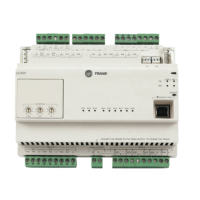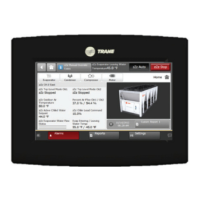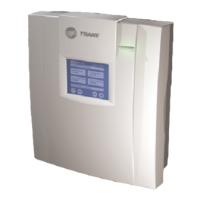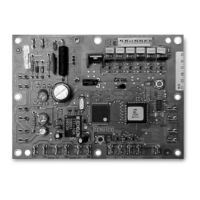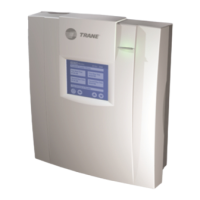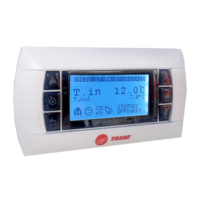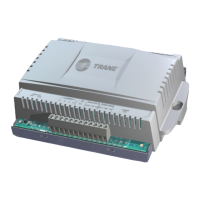30 BAS-SVX62E-EN
Tracer UC210 Controller Points and Parameters
Setup Parameters Screen
Device
Space Temperature Source: The drop-down menu is used to select the source of the controllers
space temperature value. Choices are Local Source and BAS.
Occupancy Request Source: The drop-down menu is used to select the source of the controllers
Occupancy Request. Choices are Local Source and BAS.
VAV Setup
• Airflow Nominal Status: Nominal flow is the total airflow capacity of the VAV box. Nominal
Flow becomes an active field when Generic is selected in Box Size under Equipment Options
on the Configuration page. Select the CFM nominal flow for the unit. This is normally used when
mounting the tracer UC210 controller on someone else's VAV unit.
• Unit Flow Gain: The flow gain is a multiplier used to calibrate the value reported by the flow
sensor so that the reported airflow matches the actual airflow. Typically, it is not necessary to
change this value. For Trane units, the nominal airflow and unit flow gain are based on unit size
and are not adjustable. The default unit flow gain for generic VAV boxes is 1.0.
• Airflow Measurement Offset: The flow offset is used to calibrate the value reported by the flow
sensor so that the reported flow matches the actual flow. The flow offset is determined during
the air balancing process. A test-and-balance professional will use the Tracer TU Air and Water
Balance tool to calculate this value and balance the VAV box. Typically, it is not necessary to
change this value.
Note: The flow offset is calculated only for two-point balancing, which requires reading both
the maximum and minimum airflows during balancing. Two-point balancing ensures
greater accuracy over the entire range of air valve operation.
• Airflow Gain: The airflow gain is used to calibrate the value reported by the flow sensor so that
the reported airflow matches the actual airflow. The flow gain is determined during the air
balancing process. A test-and-balance professional will use the TU Air and Water Balance tool
to calculate this value and balance the VAV box. Typically, it is not necessary to change this
value.
Ventilation Setup
• Ventilation Setpoint Local: The Tracer SC BAS uses the ventilation setpoint from all the VAV
boxes to calculate how much outdoor air (OA) the system needs. During the occupied mode,
this setpoint is the active setpoint for ventilation, and should be equal to the ventilation airflow
required at design occupancy of the space.
• Ventilation Standby Setpoint: During the occupied standby mode, this setpoint is the active
setpoint for ventilation.
Space CO
2
Setup
• Space CO2 Low Limit: The controller adjusts the ventilation setpoint based on the current CO2
concentration. When the concentration is less than or equal to this low limit, the zone is most
likely unoccupied and the ventilation setpoint is set equal to Ventilation Standby Setpoint.
When the concentration is between the low and high limits, the ventilation setpoint is adjusted
proportionally between Ventilation Standby Setpoint and Ventilation Setpoint Local.
• Space CO2 High Limit: The controller adjusts the ventilation setpoint based on the current CO2
concentration. When the concentration is greater than or equal to this high limit, the zone is
most likely at design occupancy and the ventilation setpoint is set equal to Ventilation Setpoint
Local.
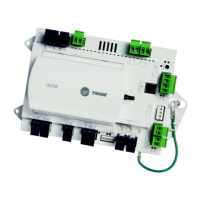
